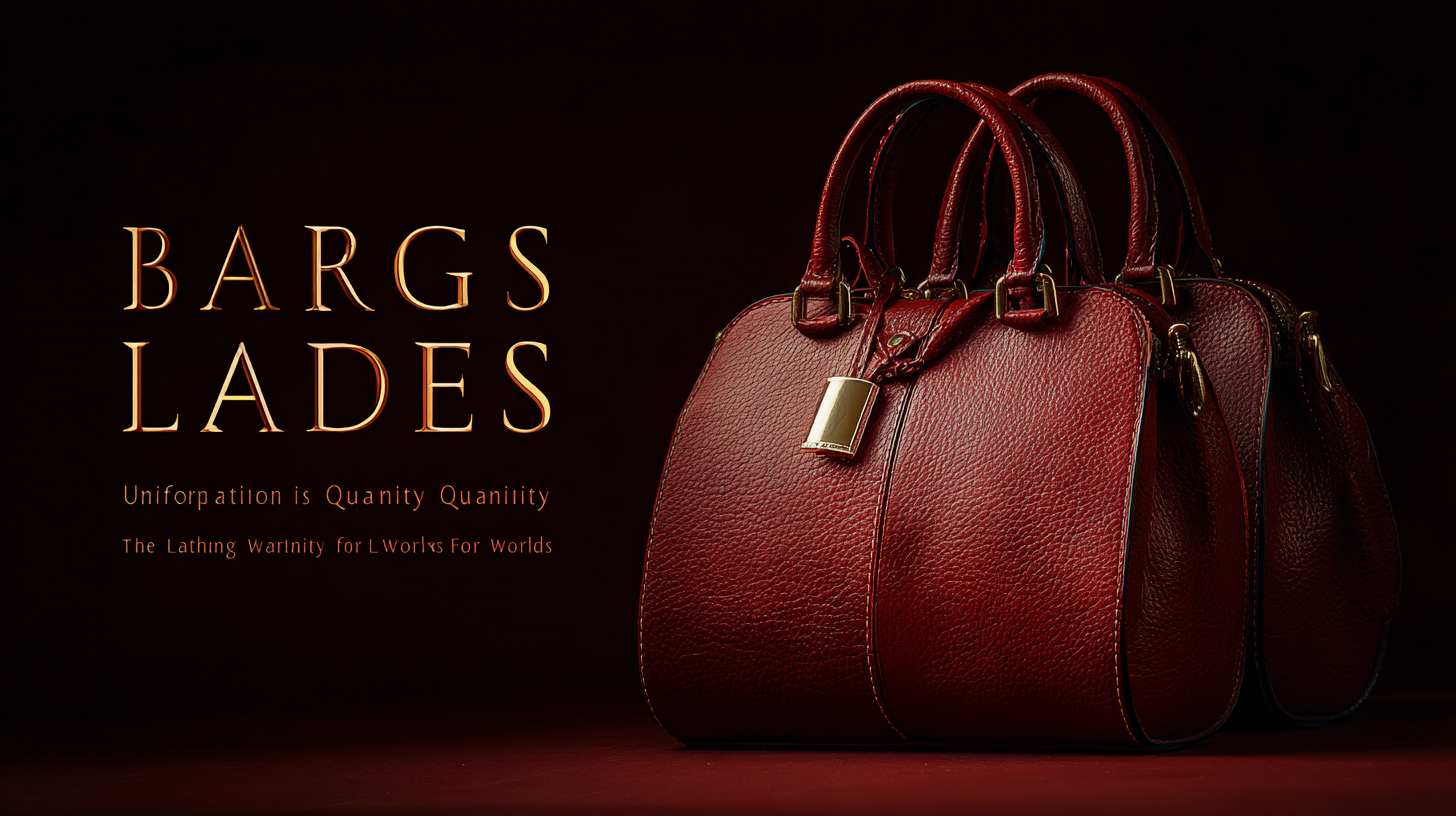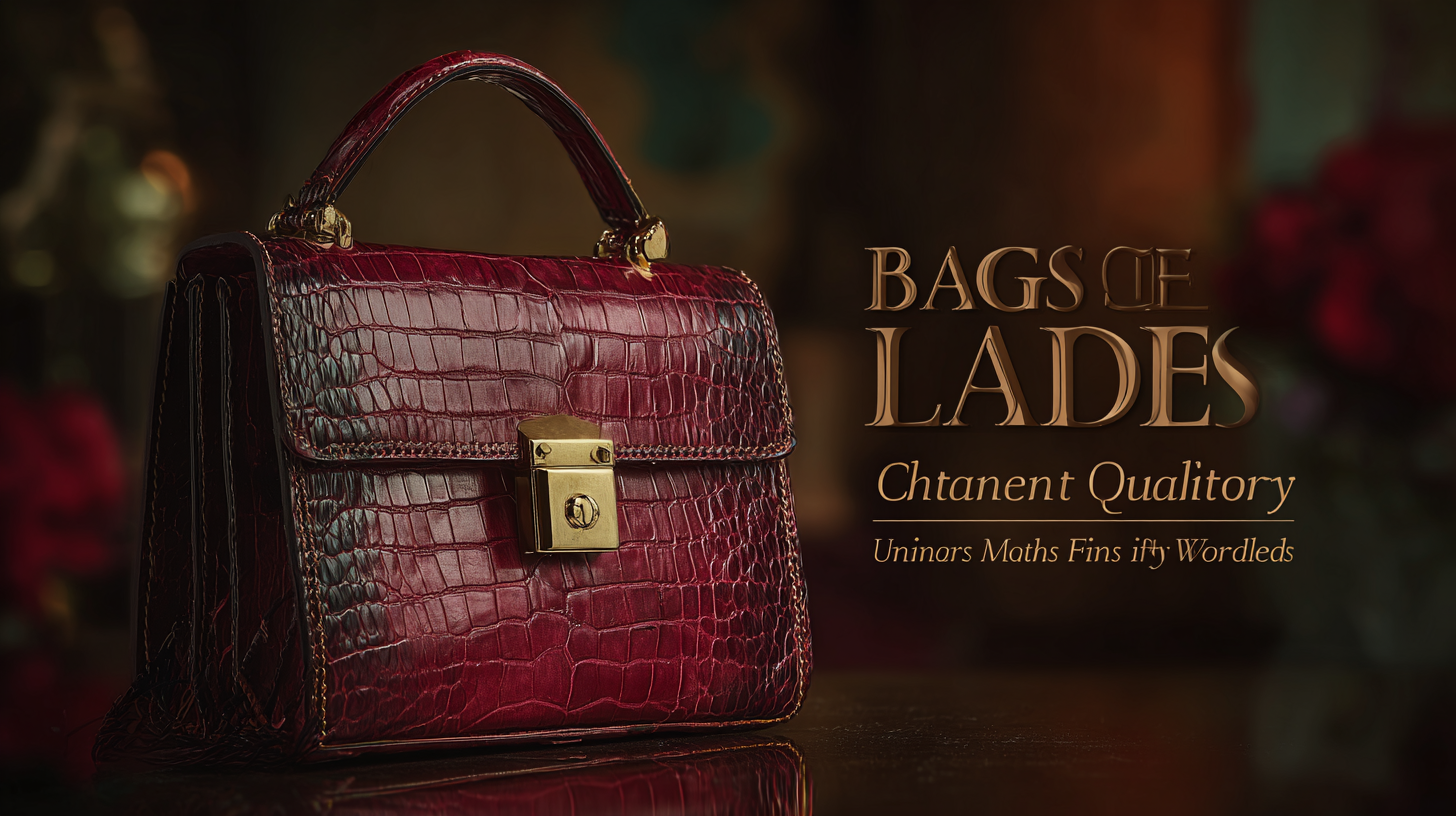Leave Your Message
In recent years, the global demand for premium quality "Bags For Ladies" has seen remarkable growth, driven by an increasing emphasis on fashion and functionality among consumers. According to a report by Market Research Future, the ladies' bag market is projected to reach USD 67 billion by 2025, expanding at a CAGR of 5.2%. Chinese manufacturing has emerged as a powerhouse in this domain, delivering unmatched quality that caters to both high-end and budget-conscious consumers. With robust export certifications and adherence to international standards, Chinese manufacturers are not only enhancing the aesthetic appeal of their products but also ensuring durability and reliability, positioning themselves as key players in the global supply chain.

This blog will explore the intricacies of the import-export certifications in the industry, coupled with practical tutorials to navigate this evolving market landscape.
China's dominance in the global luxury handbag market is evidenced by its impressive 36% share, a figure that underscores the country's pivotal role in shaping trends and influencing the demand for high-quality accessories. This remarkable statistic highlights not only the manufacturing prowess of Chinese companies but also their ability to blend traditional craftsmanship with modern techniques. Brands searching for the finest materials and unique designs often find their answers within China’s borders, making the country a go-to destination for luxury handbag production.
The meticulous attention to detail and quality assurance processes that characterize Chinese manufacturing are crucial to its reputation. As global consumers increasingly seek both style and durability in their luxury purchases, Chinese manufacturers have adapted to meet and exceed these expectations. With a growing emphasis on sustainable practices and innovative designs, Chinese producers are now setting the standard for the industry, ensuring that each piece reflects a commitment to unmatched quality. This transformation has positioned China not just as a manufacturer, but as a significant player in the luxury fashion landscape, creating handbags that resonate with discerning shoppers around the world.
The world of fashion is increasingly captivated by the unmatched quality of Chinese manufacturing, especially in the realm of ladies' bags. Several key factors contribute to this ascent, cementing China's position as a leading producer of high-end handbags. Firstly, the integration of advanced technology plays a pivotal role. According to a 2023 report by the China Leather Industry Association, over 70% of Chinese bag manufacturers have adopted automated production processes, significantly enhancing precision and consistency in product quality.
Another factor driving excellence is the focus on skilled craftsmanship. The same report highlights that investments in training programs have elevated the skill levels of workers, enabling them to master intricate techniques essential for producing luxury bags. Additionally, stringent quality control standards have been implemented at every stage of production, leading to a reduction of defects by about 30% in the past two years. This dedication to quality not only ensures satisfaction among consumers but also establishes a reputation for durability and style, attracting brands from around the globe to source their bags from China.

The trust that high-end brands place in Chinese suppliers for ladies' bags is undeniable, with approximately 80% relying on these manufacturers to deliver unmatched quality and craftsmanship. According to the "Global Fashion Industry Report 2022," China accounted for nearly 40% of the global luxury goods market, illustrating its pivotal role in supplying high-quality fashion products. This level of confidence stems from China's advanced manufacturing technology, skilled labor force, and favorable cost structures, allowing brands to balance quality and affordability seamlessly.
Moreover, a study by the McKinsey Global Institute highlighted that the productivity in China's manufacturing sector has increased by over 25% in the last five years, making it a key player in the production of premium goods. With stringent quality control measures and innovative design capabilities, Chinese manufacturers have positioned themselves as leaders in producing luxury ladies' bags. Brands are not only drawn to cost efficiency but also to the rich heritage and craftsmanship that Chinese artisans bring to the creation of these elegant accessories. This synergy between innovation, tradition, and quality assurance is a significant reason why high-end fashion labels continue to trust Chinese suppliers for their ladies' bags.

The quality control landscape in Chinese handbag production is undergoing a remarkable transformation, driven by three key technologies. First, the integration of artificial intelligence in quality inspection processes allows manufacturers to detect defects with unparalleled precision. AI algorithms analyze the production line's output in real-time, ensuring that only the finest bags pass through to consumers. This technology reduces human error and streamlines the quality assurance workflow, ultimately enhancing the reputation of Chinese manufacturing.
Another significant advancement is the implementation of advanced materials testing technologies. These innovations enable manufacturers to assess the durability and performance of materials used in handbag production. By utilizing techniques such as tensile testing and abrasion resistance testing, manufacturers can guarantee that every handbag meets international standards for quality and sustainability.
Tip: When selecting a high-quality handbag, look for brands that emphasize quality control in their production processes.
Furthermore, the rise of digital twins in production is revolutionizing how manufacturers approach design and testing. Digital twins create a virtual replica of the handbag, allowing for extensive simulations and testing before any physical production occurs. This not only shortens the time to market but ensures that each design is refined and perfected.
Tip: Consider supporting brands that are transparent about their production practices and quality control measures, as this often reflects their commitment to craftsmanship.
China's supply chain efficiency has significantly influenced the production standards of ladies bags globally. A recent report from the Global Supply Chain Institute indicates that China holds approximately 28% of the world's total market share for women's handbags. This dominance can be attributed to its sophisticated manufacturing processes and the integration of advanced technology in supply chain management. With the ability to swiftly respond to market demands, Chinese manufacturers optimize production schedules and reduce lead times, thus ensuring that brands receive high-quality products in a timely manner.
Moreover, a study by McKinsey & Company reveals that China's focus on quality control and innovation has raised the bar for global standards in bag manufacturing. Approximately 90% of manufacturers in the Chinese textile and fashion industry are now adopting sustainable practices, leading to both enhanced product quality and environmental accountability. This commitment to excellence not only benefits consumers with high-quality ladies bags but also positions Chinese manufacturers as leaders in the global market. As brands increasingly source from China, they find that the combination of efficiency, quality, and sustainability aligns perfectly with the evolving preferences of consumers worldwide.
